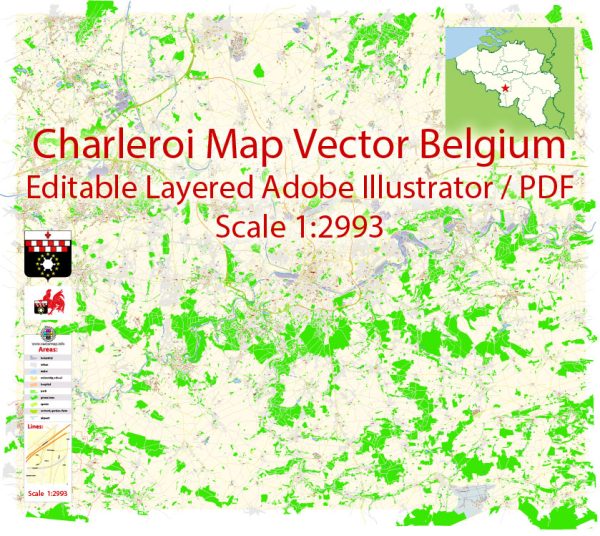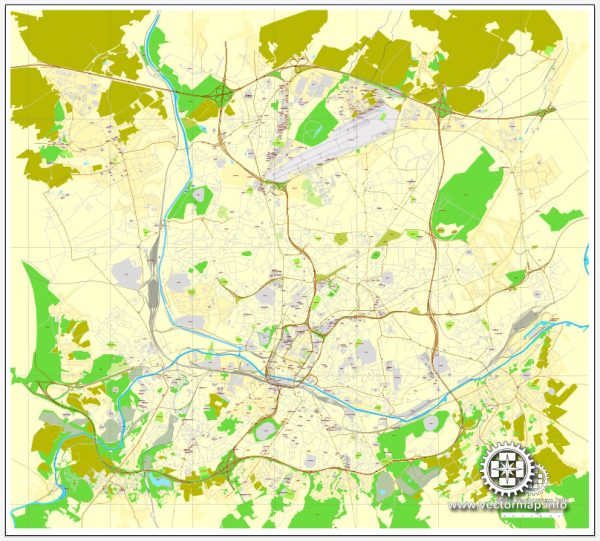Charleroi is a city located in the southern part of Belgium, in the region of Wallonia. It has a rich history that dates back several centuries. Here’s an overview of Charleroi’s history and its significance:
- Early History: The area where Charleroi is now situated has a history that goes back to Roman times when it was a rural settlement. However, Charleroi as a city began to take shape in the 17th century.
- Development as a Industrial Center: Charleroi’s significant growth and development began in the 19th century during the Industrial Revolution. The city’s strategic location at the confluence of the Sambre and Meuse rivers made it an ideal location for industries, particularly steel production, glassworks, and coal mining. It quickly became a thriving industrial center, attracting a diverse workforce.
- The Name “Charleroi”: The city’s name, “Charleroi,” is of relatively recent origin. It was named in honor of Charles II of Spain, who granted city privileges to Charleroi in the late 17th century. Before that, the area was known as Charnoy, and it was primarily agricultural.
- World War I and World War II: Charleroi played a significant role in both World War I and World War II. During World War I, it was the site of intense battles and suffered heavy damage. In World War II, Charleroi was occupied by Nazi forces.
- Post-Industrial Decline: After World War II, the city experienced a decline in its heavy industry. Many of the coal mines and steel factories that were once the backbone of the local economy closed down, leading to economic challenges and high unemployment rates.
- Modern Charleroi: In recent years, Charleroi has been making efforts to revitalize and diversify its economy. The city has invested in infrastructure, culture, and tourism, attempting to shed its image as a declining industrial city. The city’s transport infrastructure, including Charleroi Airport, has helped it become a hub for international travelers visiting Belgium.
- Cultural and Tourist Attractions: Charleroi has various cultural and tourist attractions, including the Photography Museum, the BPS22 (Museum of Art of the Province of Hainaut), and the imposing Palais des Beaux-Arts. The city also has several parks, including the Parc de Monceau, which provides green spaces for relaxation.
- A Multilingual City: Charleroi is in the French-speaking region of Wallonia, but due to its history as an industrial hub, it is a melting pot of cultures. The city’s population is diverse, and multiple languages are spoken, including French, Dutch, and German.
In summary, Charleroi has a history that encompasses its transformation from a small agricultural settlement into a major industrial city during the 19th and early 20th centuries. It has faced challenges in the post-industrial era but is working on reinventing itself as a modern, culturally vibrant city with a unique history and character.



 Author: Kirill Shrayber, Ph.D.
Author: Kirill Shrayber, Ph.D.